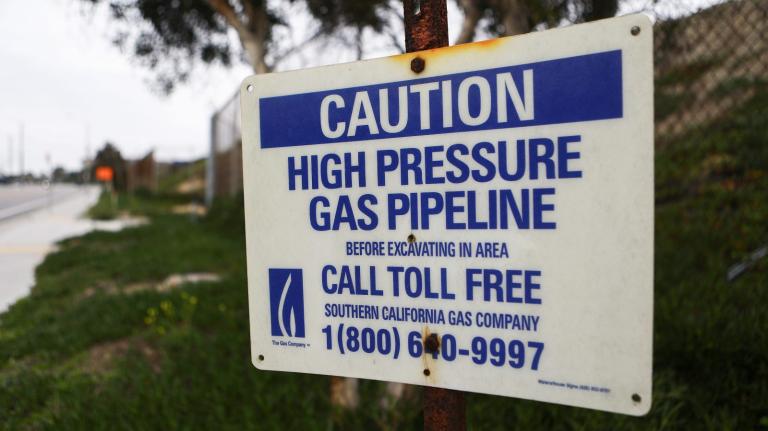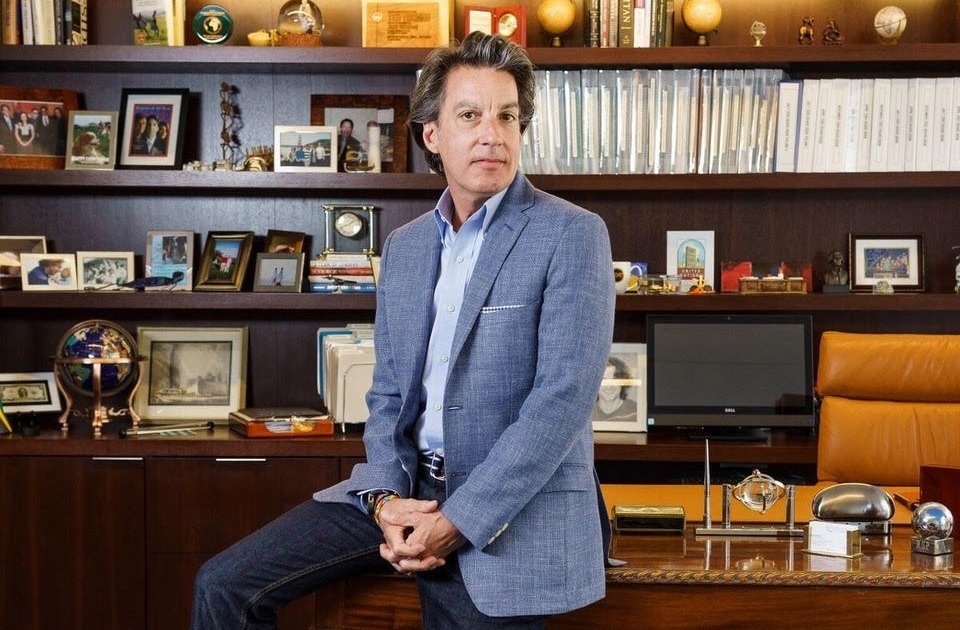There’s no easy way to say this: We’re not doing enough to address climate change.
Even leading global plans to slow the pace of our rapidly changing planet are dire: approximately 1.5 degrees Celsius of warming, loss of the Greenland ice sheet, death of 80 percent of the world’s coral reefs and an atmosphere that’s 450 parts per million carbon dioxide. Scientists and policymakers have painted a bleak picture of the future: a vision of widespread destruction that has left a lot of people feeling utterly hopeless, instead of inspired to implement sweeping, international reforms while we still can.
Enter climate restoration, an ambitious and galvanizing effort to not just stop climate change, but to actively reverse its most catastrophic effects, and importantly, restore earth’s climate back to its pre-industrial state.
Solutions include returning atmospheric CO2 to sub-300 parts per million through scalable technologies deployable worldwide. Current projects in the works include manufacturing concrete — the most widely-used man-made substance on earth — using CO2 pulled directly from industrial emissions or the atmosphere. Novel approaches to protecting sea ice involving silica microbeads also show promise. The beads, serving as a reflective shield against the sun, keep sea ice from melting, and, in turn, the ocean beneath from warming.
On September 17, the Foundation for Climate Restoration is hosting the first-ever Global Climate Restoration Forum to showcase solutions like these, call on attendees to join the budding Coalition for Climate Restoration and lay the groundwork for global growth of the movement. Featured speakers include Anousheh Ansari, CEO of the incentive-competition XPRIZE Foundation; Kathleen Rogers, president of Earth Day Network; and Katie Eder, the 19-year-old founder of youth climate activism network Future Coalition; as well as representatives from the Vatican, local government, and the UN. Event organizers aim for climate restoration to expand the agenda for global climate change action.
Lead organizer, Rick Parnell is CEO of the Foundation for Climate Restoration. Parnell came to the foundation over a year ago from the United Nations Foundation, where he’d been for 16 years, most recently as COO. His immediate efforts to introduce climate restoration to UN representatives and other global leaders led to the inaugural forum.
Parnell recently spoke with Grist about the upcoming forum, building social movements and why climate restoration gives him — and all who care about the planet — hope. This conversation has been edited for length and clarity.
Q.What does climate restoration mean to you?
A.I’ve been in the climate space almost 20 years through the United Nations Foundation, and what really struck me about climate restoration is that the idea acknowledges that this is a human problem — but humanity can also fix it.
As opposed to talking about how we adapt and mitigate and keep [climate change] from being as bad as it could be, what if we actually just fixed it? If you tell someone we’re really doomed and there’s not a whole lot you can do, then they’re paralyzed. They don’t know what to do. If you say, ‘Look, we got ourselves here, but there are some solutions,’ people respond.
Q.What was your ‘aha moment’ when you decided to make climate restoration your mission?
A.I first met [Foundation for Climate Restoration founder and chairman] Peter Fiekowsky in June 2018. He introduced me to the idea of climate restoration at the Forbes Impact Summit, and I found that as I talked to him more and more, I became more and more intrigued. And I watched him pull in other people in the same way. To a certain extent, he was preaching to the choir — we were surrounded by people who believe in climate change and are supportive of some kind of effort to combat it. But, inevitably, people would initially push back: ‘Wait, wait, wait; you can’t restore the climate.’ As he shared more and we started to understand the idea, it was like, ‘Wow, actually maybe we can.’ That was a big moment for me; observing that shift and having one of my own.
I’d always wanted to be a part of climate action, but I didn’t want to be a part of the doom and gloom. This is unbelievably corny, but when I was growing up, we had The Jetsons and Star Trek. Technology and humanity were going to come together and we were going to have this beautiful future. But we left this approach behind. Climate restoration presents a new opportunity to use human ingenuity to create an inspiring future.
Q.The idea — restoring our climate so that future generations can experience a healthy planet similar to what our grandparents and great-grandparents once knew — seems like an incredibly difficult task. Is there a risk of being overly ambitious here?
A.I think, as with all things, if you put your mind to it and you can get the right people in the room together on all kinds of different issues, then you can get anything done. So I don’t think it’s too ambitious.
Mitigation and adaptation are critically important. Renewables are on a path; we’re not going back. The piece that’s missing is to finish the job with restoration. Remove the carbon, restore the Arctic ice and return oceans to full health, and we will have restored the climate. So no, I don’t think that we’re too ambitious. 300 parts per million by 2050? Of course that’s aggressive. But we have to fix it.
Q.How would you say the idea of climate restoration has been received? Has it been met with skepticism or acceptance?
A.Let me tell a quick story. I was headed to a lunch meeting last week and running very, very late. And I was not as climate-friendly as I’d like to be. I took an Uber. (The more we can ride the metro, the better!) The driver was charming and asked me what I did. It was a nice little conversation. Just before we got to my destination, he stopped the car a block away and said, ‘You can’t get out yet. You’ve got to finish this. Tell me more about climate restoration.’ After detailing some solutions, I said, ‘It’s not going to be easy, but of course we can restore the climate.’ He said, ‘You’ve just lifted a huge weight off of me. I’ve not heard anyone say we actually can fix this.’
Q.So what is the biggest hurdle to fixing our climate?
A.Financing. And communicating about it in a way people understand. One thing that just knocked me off my feet when I first started getting into this was the idea that you can actually make carbon-negative concrete. You can make a carbon-negative building. It’s unbelievable! But not enough people know about it.
Q.You just mentioned one exciting potential solution. Are there any other climate restoration projects that you’re particularly excited or intrigued by right now? What’s lighting the fire under you right now when it comes to the solutions at hand?
A.We’re not in the business of picking winners, but I’m personally really intrigued about the opportunities around Arctic ice. Ice911 is working on essentially floating tiny beads of sand that boost reflectivity on the ice, which allows it to stay thicker for longer. They have proven the technology in very, very limited locations, and I’m really intrigued to see where they go next. Leslie Field, Ice911’s founder, is speaking at our forum.
Q.What would you like the forum to accomplish?
A.We have some really incredible speakers talking about the concept of climate restoration, the idea that we can fix this if we choose to do it. The approach is to bring together different groups, showcase climate restoration, illustrate some solutions, and highlight the political will, the youth movement and the faith-based movement. Then we’ll work on our forward-looking strategy. This is the first annual forum. By the time we get to September 2020, we want to be talking about how many local governments have come online, how many different companies have called for climate restoration solutions in their own work and supply chain and how other policies have changed.
I personally believe the only way we’re going to get there is if we welcome everyone in, we all roll up our sleeves and we figure out how to do this together. If we have not achieved a path towards climate restoration by 2030, I don’t know what it means for humanity and I don’t even want to go there. By the time we get to September 2020, I would like people to have changed their mindset to, ‘We can get this done and we’re on a path to solutions.’
Q.Do you feel hopeful for the future of our planet?
A.So many people want to do the right thing. It’s not forced hope: I believe we can. I’m a history buff, and I feel every time humanity has had challenges put in front of us, most of the time, we rise to the challenge. We can do a lot of things when we choose to do so.
I’m not a climate expert. I build institutions and movements, and I’m a big believer in people. If humanity decides we want to restore the climate and ensure future generations can have the kind of home we enjoyed and that our grandparents enjoyed, then it’s just a matter of making that decision and moving forward. This is all about the idea of hope, rolling up our sleeves, and making the commitment to get it done.
This article is sponsored by the Foundation for Climate Restoration, a nonprofit partnering with local governments, NGOs, and communities around the world to launch Climate Restoration projects at scale. Its Healthy Climate Alliance is an education, networking, and advocacy program to advance these goals.
Here at Grist, you know what we like almost as much as solar panels? Partners! They help us keep the lights on so we can keep bringing you the best and most Gristy journalism on the planet. Click here for more information.




